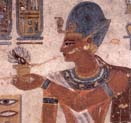Ramses III
Historians consider King Ramses III the last of the great pharaohs to rule Egypt with significant power. As the second pharaoh of the 20th Dynasty, Ramses III held power during the decline of Egypt.
Family Ties
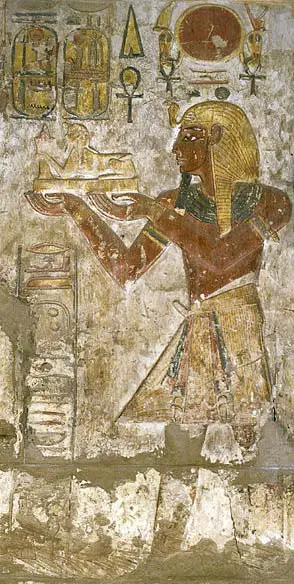
© Jon Bodsworth - Ramses III at Khonsu
Ramses III was the son of King Setnakhte and Queen Tiy-merenese. Although little is known of Ramses’ father, Egyptologists believe Ramses III to be the grandson of the great Ramses II. He became king at the death of his father in March 1187 BC. He would rule for over 31 years until approximately 1151 BC. The next three rulers of Egypt, Ramses IV, Ramses V and Ramses VI, were all his sons.
Despite a long rule, little is known of the royal family in the house of Ramses III. He had many wives, including Isis, Titi and Tiy. He had at least 10 sons and one daughter. Many of his sons died before him and were buried in the Valley of the Queens.
King Ramses III held many names meant to identify him as close to the gods. His birth name of Ramses meant “Re has fashioned him”. Added to his name was “heqaiunu,” meaning “Ruler of Heliopolis.” His throne name was Usermaatre Meryamun, or “Powerful is the Justice of Re, beloved of Amun.” Egyptologists spell his name in many ways, including “Ramesses III.”
Trouble and Turmoil
Despite his closeness to the gods, his long rule was marked with numerous problems. Egypt maintained a place of extreme power in the world for over 2,000 years. However, the world was seeing major changes. The Mediterranean area saw many wars and fall of empires during Ramses’ reign.
A surge of homeless people and changing social connections created turmoil within Egypt. During his reign, the first recorded worker strike in history was recorded when workmen were failed to be paid.
Although Ramses III began his rule by trying to peacefully consolidate the Empire, he soon came under attack. He managed attacks from Libya and the Sea People, along with other minor conflicts.
Building Projects
Facing corruption and abuse, Ramses III spent a lot of time inspecting and reorganizing cult temples throughout Egypt. Instead of building new temples, he donated large amounts of land to the most important temples. By the end of his rule, one-third of all cultivated land belonged to the cult temples.
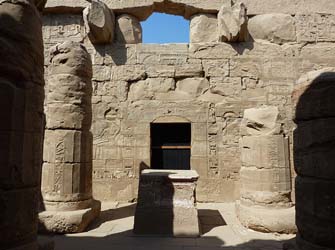
© Hannah Pethen - Shrine at Khonsu Temple
His first and main construction was his mortuary temple, known as Medinet Habu. Finished in the 12t year of his reign, this temple features inscribed reliefs describing Ramses’ battles against the Sea People. Although few artifacts from King Ramses III remained within the temple, it remains one of Egypt’s well preserved temples.
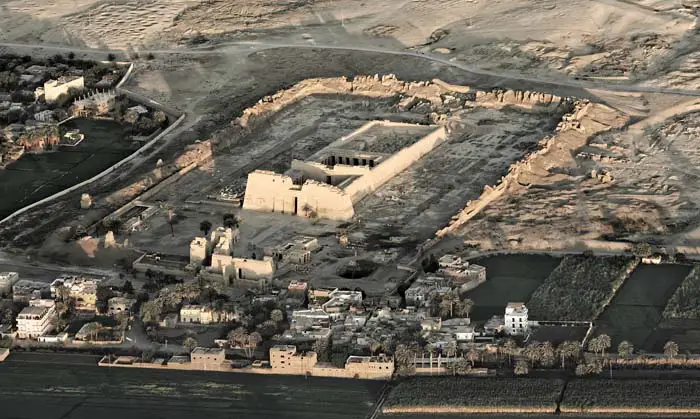
© kairoinfo4u - Medinet Habu Temple
After the construction at Medinet Habu, he funded numerous relief decorations and two small temples at Karnak. He also carried out building work at multiple Egyptians centers, including Heliopolis, Memphis and Edfu.
Harem Conspiracy
During the 29th year of rule, a conspiracy against King Ramses was formed by his wife Queen Tiy and several other assassins. The motive was to place Tiy’s son, Pentewere, on the Egyptian throne.
At least 40 people were implicated and tried together as a group. The Harem Conspiracy Papers reveal the assassins to be harem officials close the king. They planned to start a revolt outside of the palace during the Opet Festival at Thebes in order to kill the king and set off a coup.
The conspiracy failed. All involved were found guilty during a trial by jury, including the Queen and her son. They were forced to commit suicide either in prison or in front of the court.
Questionable Death
Despite surviving the conspiracy, Ramses III would not live to see the end of the trial. He was buried in a large tomb in the Valley of the Kings. Archaeologists uncovered both religious and secular scenes within his tomb, which is also known as “The Tomb of the Harper” due to a painting of two blind male harpists.
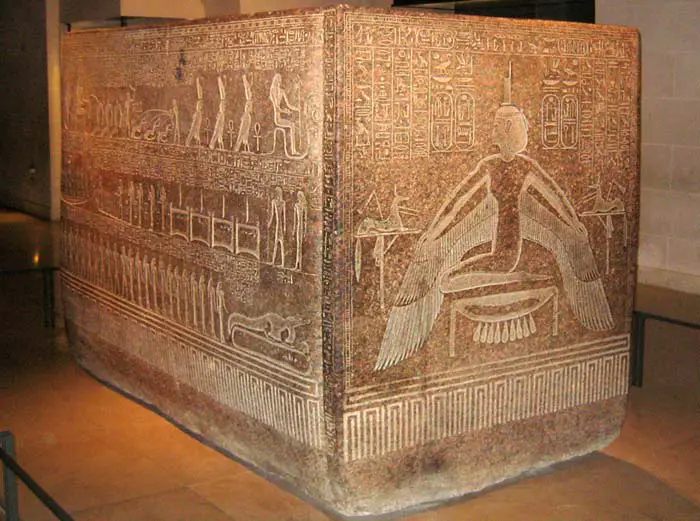
© Wally Gobetz - The Tomb of Ramses III
Many theories involving assassination have surrounded Ramses III. In 2012, Egyptologists announced that CT scans of Ramses’ mummy revealed a deep and lethal cut to his neck. Medical scientists believe the wound to have caused immediate death. Some historians believe that instead of dying during the trial, the king actually died during the assassination attempt.
Quick Facts
- Last great pharaoh of Egypt’s New Kingdom.
- Studies reveal he was murdered.
- His son and assassination plot member, Pentawere, may have been buried within Ramses’ tomb.
- He is the basis for most Hollywood Egyptian Mummies.

